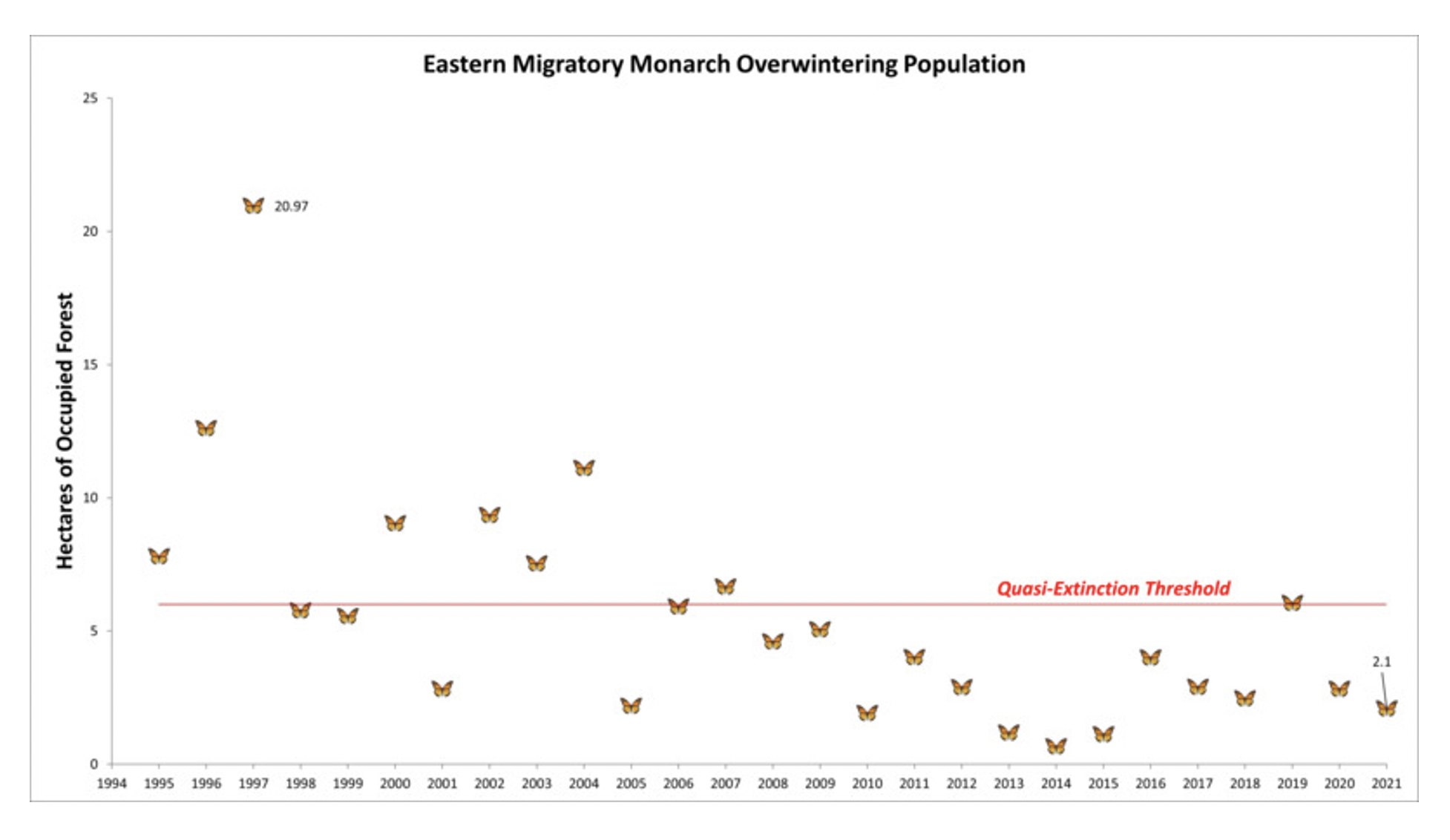WASHINGTON, D.C.—The yearly count of Monarch butterflies overwintering in Mexico, released today (see table below), continues to show a dramatic decline of the imperiled species. Today's count of 2.10 hectares (5.2 acres) of occupied winter habitat is down 26% from last year's count. The minimum population threshold needed to be out of the danger zone of extinction is six hectares.
Overall, eastern Monarchs have declined by more than 80% over the past two decades.
"Monarchs are the face of the wildlife extinction crisis where even once common species could now disappear. They need us because if we don't act now to save them, Monarch migrations will collapse and that would be morally unforgivable," said Tierra Curry, a senior scientist at the Center for Biological Diversity.
The eastern Monarch population is made up the butterflies east of the Rocky Mountains and accounts for roughly 99% of all North American Monarchs. They migrate each winter to oyamel fir forests on high elevation mountaintops in central Mexico. Scientists estimate the population size by measuring the area of trees turned orange by the clustering butterflies. That population has been dangerously low since 2008.
The U.S. Fish and Wildlife Service in December put Monarchs on the waiting list for Endangered Species Act listing, which confers no actual protection to them or their habitat. The Service itself has estimated up to an 80% probability of population collapse for eastern Monarchs within 50 years and a 96-100% probability for the western population.
"Last December even the Trump administration, the most anti-environment administration on record, could not deny that Monarchs deserve the important protection that endangered species listing provides. They just put it off for an unconscionable four more years," said George Kimbrell, legal director at the Center for Food Safety. "Now the 2021 count shows Monarch numbers declining considerably further because of Monsanto's toxic Roundup. So we are calling on the Biden administration to do what is right and what the science and law demands—list Monarchs now."
Monarchs are threatened by pesticides, global climate change, sprawl, and illegal logging of the forests where they migrate for the winter. They are also threatened by mortality during their migrations from roadkill and habitat fragmentation.
Scientists led by the Center for Biological Diversity and Center for Food Safety petitioned the U.S. Fish and Wildlife Service to protect the butterfly under the Endangered Species Act in 2014.
Monarchs have lost an estimated 165 million acres of breeding habitat in the United States to herbicide spraying and development in recent decades. The caterpillars only eat milkweed, but the plant has been devastated by increased herbicide spraying in conjunction with corn and soybean crops that have been genetically engineered to tolerate direct spraying. The butterflies are also threatened by neonicotinoid insecticides, fungicides, and other chemicals that are toxic to young caterpillars.
Monarch butterflies west of the Rocky Mountains overwinter on the central coast of California. Their numbers have plummeted by 99% and fewer than 2,000 total butterflies were counted this winter. The western migration has collapsed in part due to warmer winters and to people planting invasive tropical milkweed which is unhealthy for the butterflies.
In Canada Monarchs are slated for listing as endangered under the Species At Risk Act. In Mexico they are considered a species of special concern.





